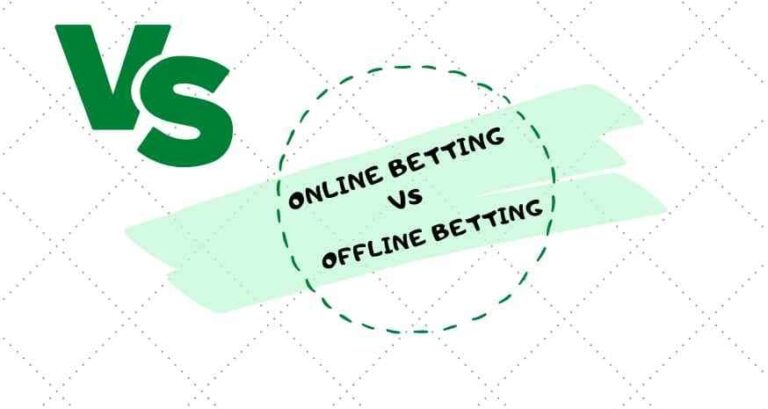The iGaming sector in Canada has experienced monumental growth in recent years. This is in part due to the government’s efforts to create a legal framework for the industry and partly because residents are increasingly accepting of the pastime.
With this expansion has come an influx of new operators, increased marketing, and widespread accessibility to gambling platforms. Review websites like BonusFinder Canada, which provide easy access to online casinos’ substantial incentives, have also spurred more players to gamble.

However, the industry’s rapid expansion has caused many to wonder about the harm it may be causing among players. In 2022, a study revealed that 1.6% of gamblers were at risk of developing problem gambling. This figure has increased to 2% in 2024.
Although this percentage may seem small, it represents an estimated 380,000 Canadians. With greater accessibility to gambling services, overcoming a gambling addiction may be more challenging than ever.
Continue reading to discover the effects of the booming gambling culture on the country and what steps operators and local government are taking to combat problem gambling.
Gambling Statistics
In 2020, Canadian iGaming revenue amounted to $1.72 billion, a figure that increased significantly to $3.69 billion by the end of 2023. Predictions indicate that, by 2029, the industry will generate $5.71 billion annually.
More than 19.3 million active gamblers generate this extensive revenue. Of these, each player spends an average of $6.75 monthly on gambling, with more adult men (63%) gambling than women (57%).
As with revenue, the number of users expected to access online gambling platforms is predicted to rise over the coming years. Predictions reveal that by 2027, 20.38 million users will be gambling online—resulting in a user penetration of 51%.
In total, online gambling contributed more than 45% of the gambling industry’s growth in the country. This shows the prevalence of iGaming and how many players have abandoned physical establishments for the convenience of online operators.
Proactive Steps
With the above statistics clearly outlining the industry’s growth and the rise in problem gambling, the government has taken proactive steps. These steps range from introducing new legislation to educating players about the dangers gambling can pose.
Legislation
One of the most significant steps undertaken is to restrict offshore operators from allowing local players access to their services. This is enforced though geolocation technology and has been replaced (in provinces where online gambling is legal) with strict requirements to ensure operators apply for a license to operate.
These operators undergo extensive screening processes to ensure that they operate according to the law and don’t prey on vulnerable players. Operators are also checked to ensure that they have applicable know-your-customer (KYC) policies in place to prevent risky and underage gambling.
Exclusions
Another step tied to operator licensing is the requirement that responsible gambling programs be present on gambling websites. These programs must be visible to players and allow easy access to support should a player feel they are developing a problem.
Part of these programs is a self-exclusion policy that players can opt into that restricts their access to gambling or limits the amount they can spend during a given time. While this goes a long way to preventing gambling addiction, many argue it is not as effective as intended because it relies on the player to opt into the program—something that is much easier said than done.
Educational Campaigns
Aside from new regulations aimed at lowering problem gambling, the government has undertaken multiple initiatives to educate players on problem gambling. At a national level, the largest is the Get to Know Gambling campaign.
Operated by the Canadian Centre on Substance Use and Addiction, the campaign aims to educate gamblers on the dangers of excessive wagers. It also outlines safe gambling practices and promotes responsible gambling through access to information and tools to help players identify problem symptoms.
Provincially, many other campaigns also exist with similar objectives. Connex Ontario provides a helpline that Ontarian gamblers can access, while KnowYourLimit.ca is a campaign in British Columbia that teaches players how to set limits and promotes gambling within financial means.
Advertising Restrictions
The advertisement of gambling services has been a heated topic internationally in recent years. Several countries have instituted bans on this type of marketing, with Canada also passing new legislation to reduce how gambling operators can market their services.
The Alcohol and Gambling Commission of Ontario (AGCO), British Columbia Lottery Corporation (BCLC), and Alberta Gaming, Liquor, and Cannabis Commission (AGLC) have all reviewed gambling advertising standards. In Ontario and British Columbia, laws have recently been revised to restrict advertising.
Outcomes
With the iGaming market constantly evolving and online casinos and sports betting at an all-time high, it is too soon to say whether the proactive steps taken by the government will prevent excessive problem gambling in the future. However, early results show that the prevalence of problem gambling has remained stable since 2022.
Despite the slight increase from 1.6% to 2% between 2022 and 2024, there is no solid evidence implicating iGaming as the cause. After all, the rise could also be attributed to physical retailers.
As such, until more time has passed, no link can be established between a greater uptake of gambling online and problem gambling. This means safe gambling may not have been jeopardized in the country—yet.
One key reason for this could be the government’s proactive measures to ensure the safety of players. Through stringent licensing requirements, constant engagement with the industry, widespread player education, and evolving policies, more steps have been taken to protect players than ever before.
Although the argument could be made that these steps are redundant should players not engage with them, the low increase in problem gambling in relation to the industry’s growth speaks volumes.
As education surrounding the dangers of gambling continues to spread, we may even see a decrease in gambling addiction in the future. If this occurs, Canada will set a stellar example for other regions where iGaming is booming to follow.



